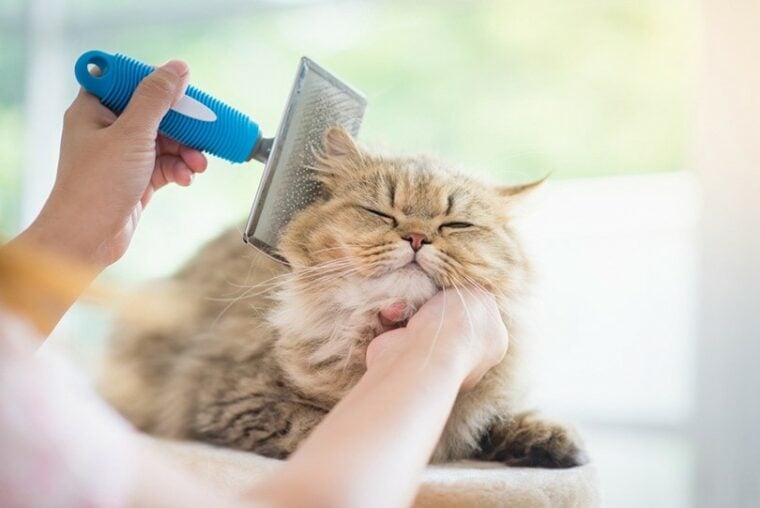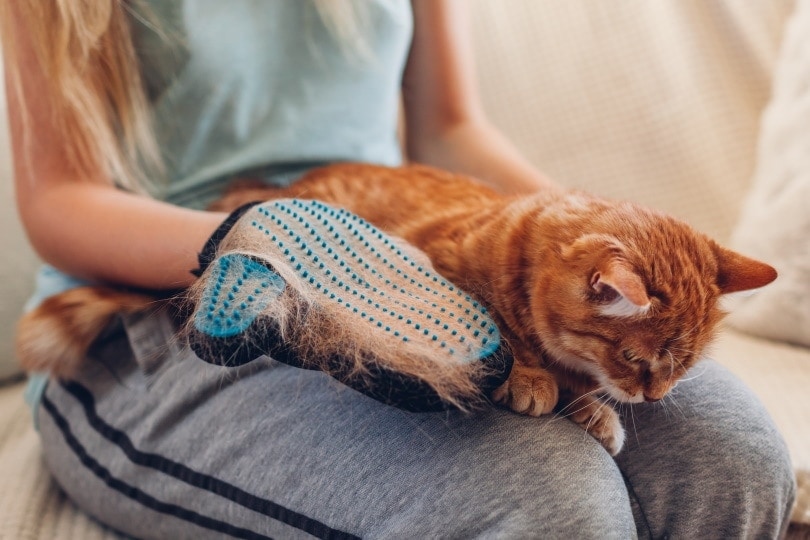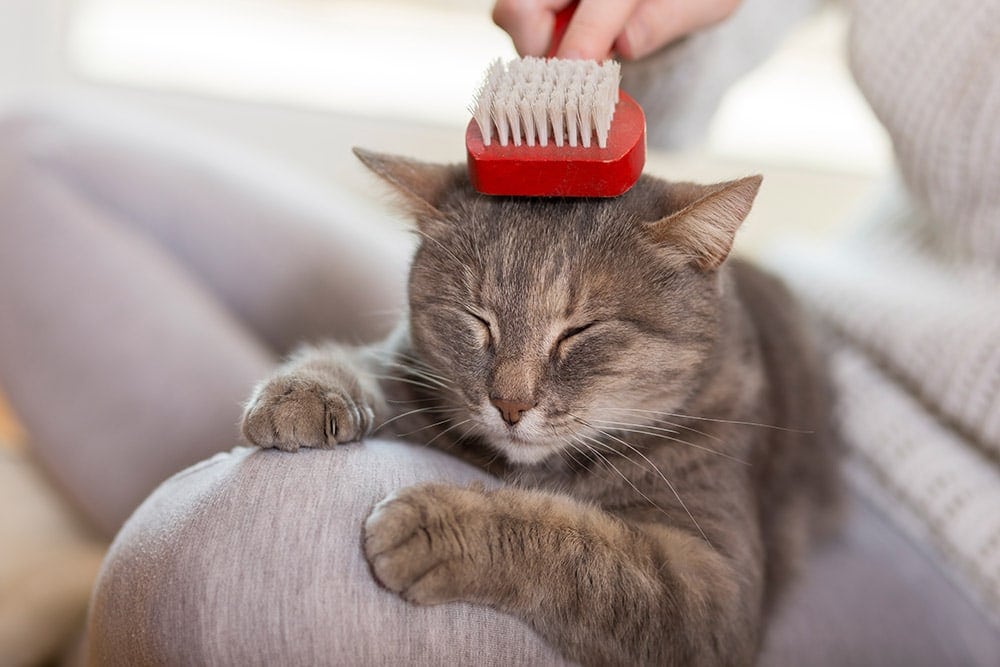
While most cats can suffice with grooming themselves, some need extra help. Cats with longer coats often need brushing to prevent tangling and matting. However, if they’re not used to getting brushed, they can become resistant.
It’s essential for cat owners to properly introduce brushing to their cats’ routines to prevent negative associations with brushes. There isn’t a silver bullet for cats that don’t want to be brushed, so it’s best to let go of the expectation of finding a quick fix. However, you can work your way towards making brushing a comfortable and normalized experience for your cat.
 Before You Begin
Before You Begin
The best way to get your cat used to getting brushed is to make it as comfortable of an experience as possible. So, don’t wait until you see an issue, such as tangled or matted hair. Working with a matted coat can be a painful experience for cats, which will only reinforce the idea that brushing is a negative activity.
If your cat has a lot of tangles or mats in its coat, it’s best to take it to a professional and reputable groomer who can safely handle the issue.

How To Brush a Cat That Doesn’t Want to Be Brushed
1. Choose the Right Time to Brush
Finding the right time to brush your cat is essential. The last thing you want is to brush your cat when it’s squirming around or feeling skittish. Cats have different parts of the day when they’re active and when they’re relaxing or lounging. So, choose a time a day when your cat feels comfortable and less active. This can be after eating a meal or after a play session.
Most pets do an excellent job of cleaning themselves, and cats are no exception. They will spend countless hours grooming, but with the Hepper Cat Brush, they no longer need to spend their days licking their loose fur.
- ONE PUSH RELEASE - This kitten brush / cat brush pops out fur with just a simple press, leaving you...
- DURABLE - Cat shedding can be a tough ordeal. Made of resilient ABS plastic and metal bristles with...
- COMFORTABLE - A cat fur brush with 60 degree angled, fine bristles and rubber stoppers will bring...
The brush is designed to be gentle yet effective, removing loose hair and stubborn knots without any painful pulling. What better way to bond with your favorite feline?
At Pet Keen, we’ve admired Hepper for many years and decided to take a controlling ownership interest so that we could benefit from the outstanding designs of this cool cat company!
2. Try Different Brushes
There are many different types of brushes and your cat may prefer one over the other. Silicone or rubber brushes are often well tolerated. For others a soft bristle brush or even a deshedding tool.

3. Introduce Your Cat to the Brush
Present the brush to your cat before brushing. Let your cat sniff it and be comfortable with it. You can place the brush near your cat so it can get used to being around it.
Just make sure not to make the brush look like a toy. Don’t wiggle it around or try to get your cat to play with it. This will only make brushing more confusing as your cat may try to bat or swipe at the brush.
4. Use Treats
Using treats is especially effective if you have a food-motivated cat. It can be helpful to reserve special treats that you only bring out for brushing.
Start by giving treats every time your cat is near the brush. So, if your cat sniffs the brush, give it a treat. You can also place the brush close to your cat and then give it a treat. What you want to do is build a positive association around the brush by rewarding your cat with a treat.
A licki mat or slow feeder can also be useful to help keep your cat distracted while you brush.

5. Only Brush Areas Your Cat Doesn’t Mind
Once your cat is comfortable with being near the brush, it’s time to move forward with brushing your cat. However, don’t start by brushing your cat’s entire body. Only start with areas where your cat enjoys receiving pets. This can be the cat’s head or back.
It’s also important not to apply too much pressure to the brush. Start with just gentle swipes that barely touch the hairs. Then, give your cat a treat whenever it allows you to swipe with your brush.
Slowly increase the depth that the brush bristles get into the coat and keep giving treats to help your cat become comfortable with getting brushed. Once your cat is comfortable getting brushed in this area, start increasing the size of the area getting brushed until you can brush your cat’s entire body. Keep in mind that this process can take several weeks.
6. Gradually Add Grooming to Your Cat’s Routine
Once your cat becomes comfortable with getting brushed, start making it a regular part of your cat’s routine. Pick a time of day when you can consistently brush your cat. For example, you can start brushing your cat every time it finishes a meal. This consistency can help your cat know what to expect and normalize brushing.
 Conclusion
Conclusion
Training your cat to become comfortable with brushing can be challenging, but it’s a worthwhile endeavor. Just remember to be gentle and consistent, and don’t brush your cat’s coat only when it starts to get tangled. Take a break if your cat’s being resistant and try again by only doing what’s comfortable for your cat. It might be a slow process, but with some time and patience, you can help your cat develop a positive association with brushing.
Featured Image Credit: ANURAK PONGPATIMET, Shutterstock

 Before You Begin
Before You Begin





